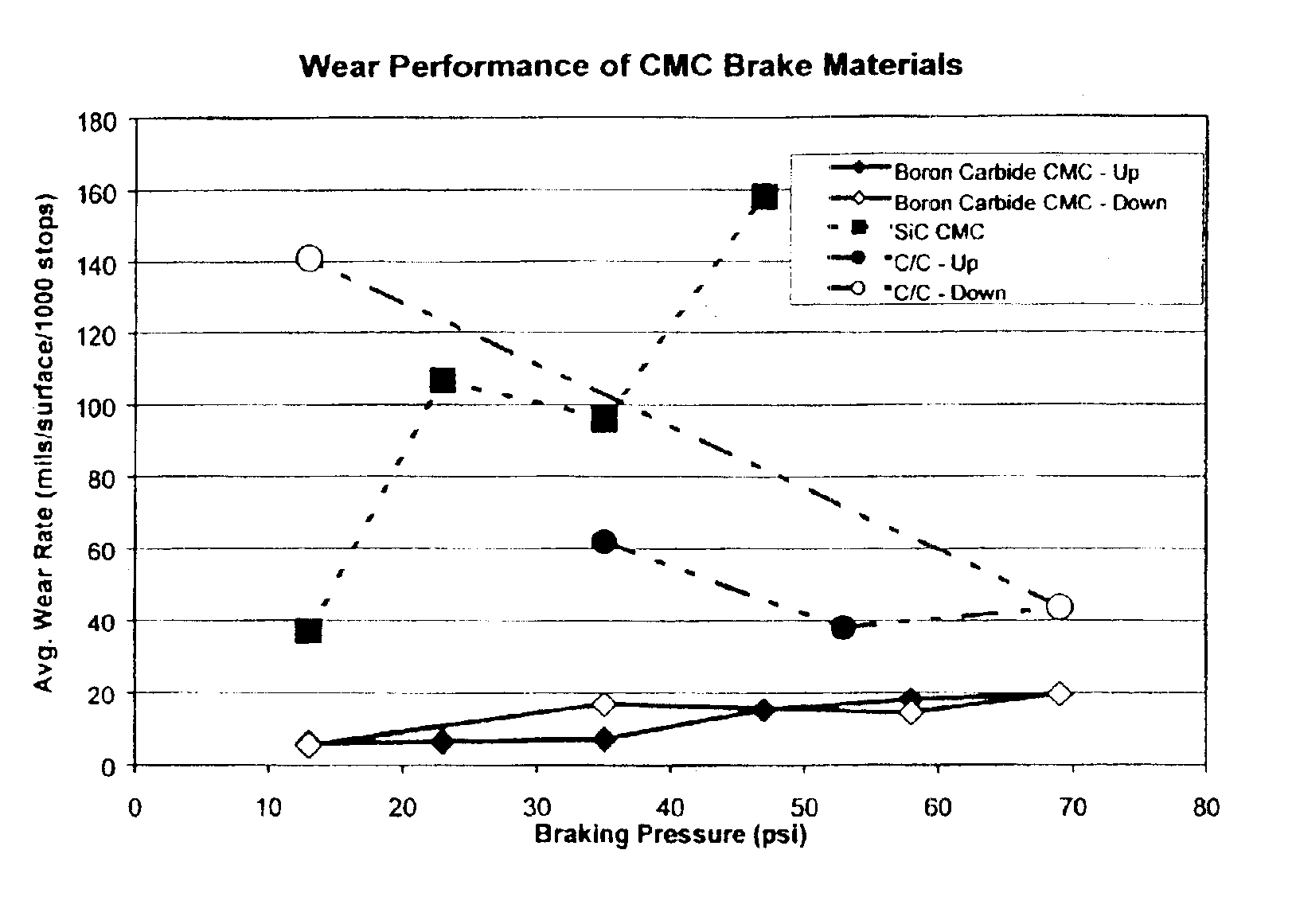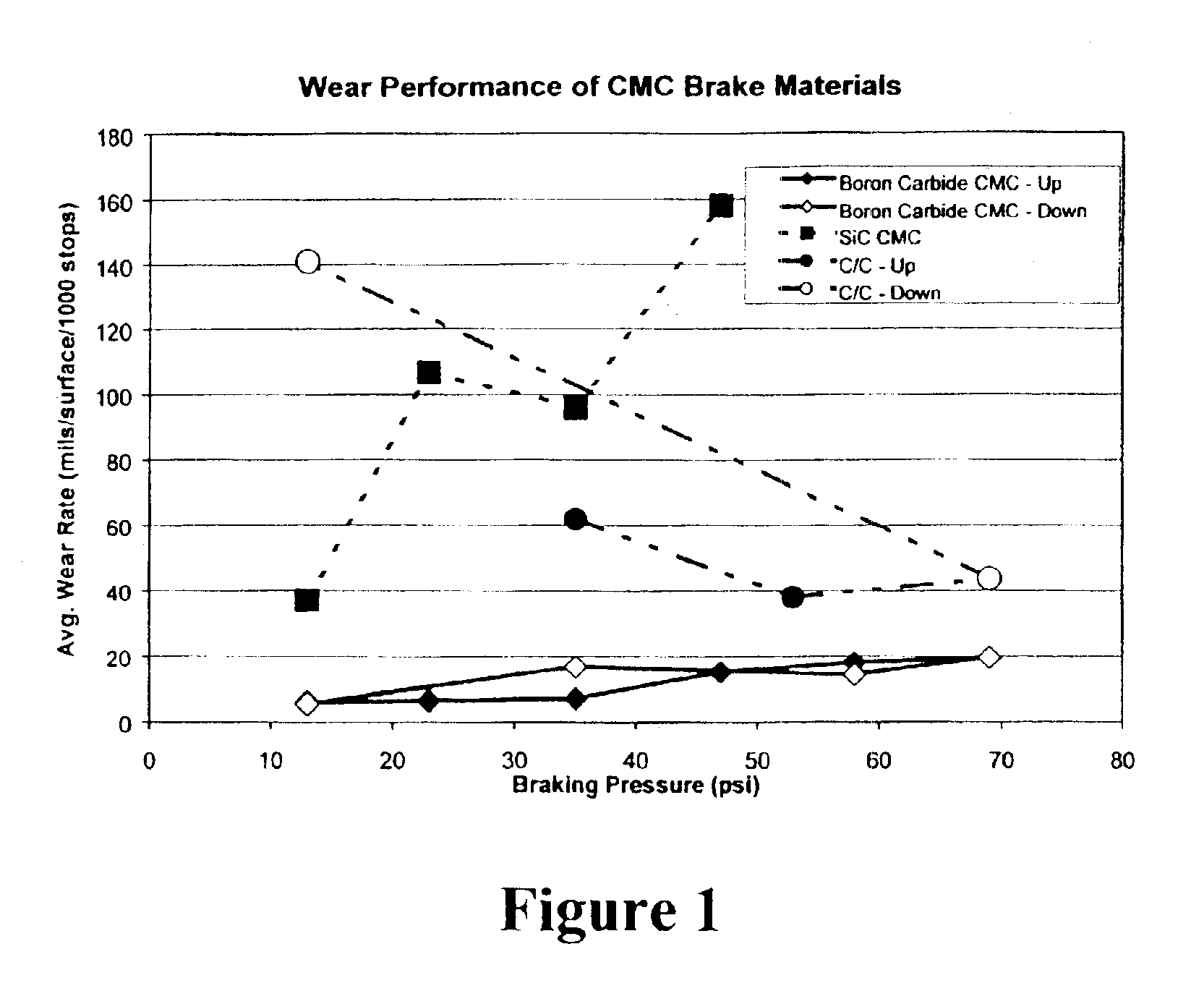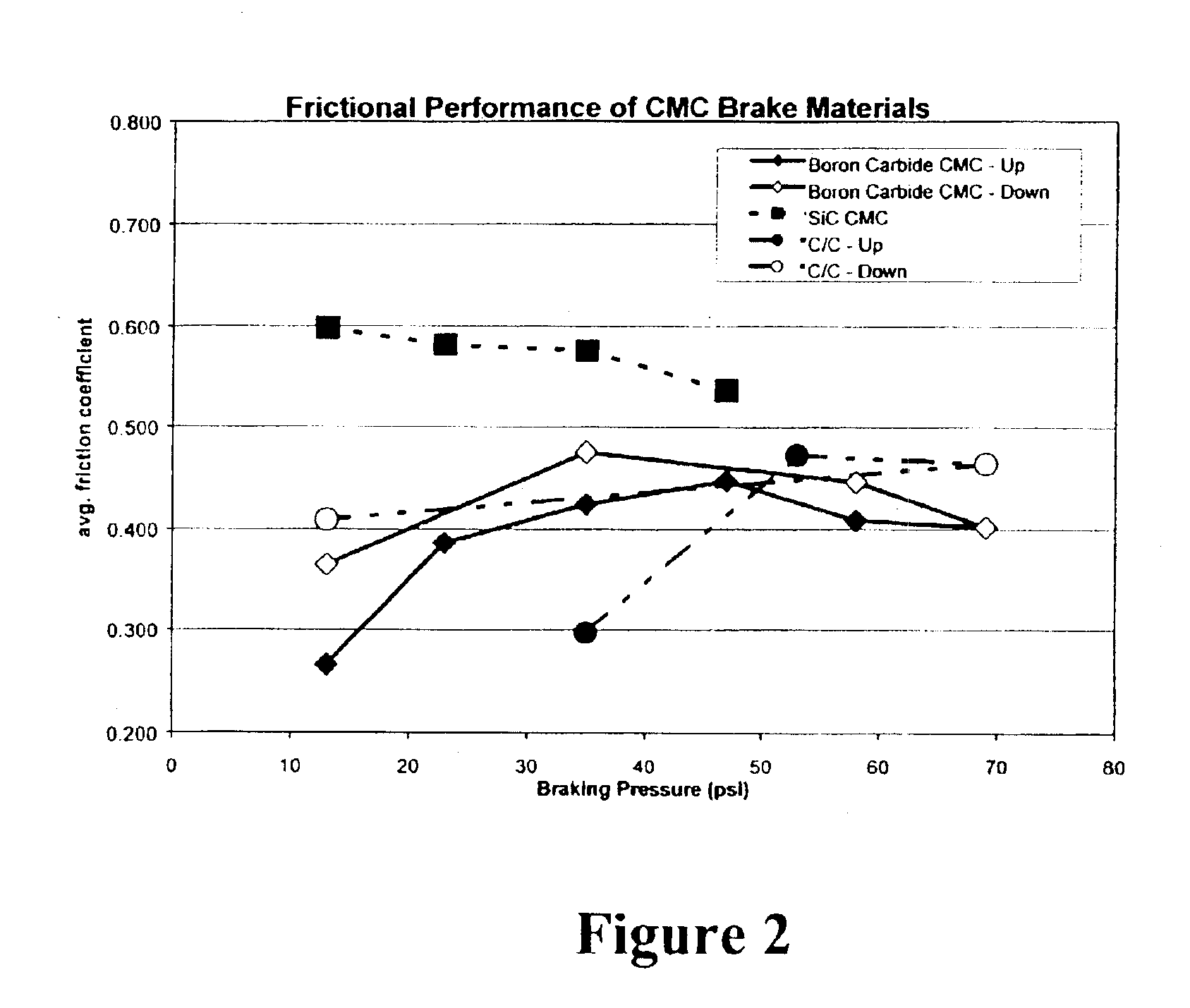Boron carbide based ceramic matrix composites
a ceramic matrix and carbide technology, applied in the field of ceramic matrix composites, can solve the problem of not being able to form large sic crystals
- Summary
- Abstract
- Description
- Claims
- Application Information
AI Technical Summary
Benefits of technology
Problems solved by technology
Method used
Image
Examples
Embodiment Construction
Several B4C-based slurry cast, melt-infiltrated CMC test specimens were prepared using the following general steps:(1) Carbon fiber preforms were infiltrated by CVD-carbon both to deposit a surface coating and to partially fill the fiber bundles while leaving a porosity level of about 20-60%.(2) An aqueous B4C-based slurry was prepared by mixing sub-micron B4C powder with the appropriate additives including wetting agents, dispersants, etc. (Although submicron powder was used in this specific testing, it has now been established, so far, that particle sizes up to about 20 μ can be used with quite satisfactory results.)(3) The coated carbon preform was placed in a plaster of paris mold and slurry cast with the B4C slurry to impregnate the preform pores with B4C particles to form a green body.(4) After drying, the B4C impregnated green body was placed in a vacuum furnace and infiltrated with molten silicon (which can be alloyed with other elements) to form a near fully dense composite...
PUM
| Property | Measurement | Unit |
|---|---|---|
| size | aaaaa | aaaaa |
| temperature | aaaaa | aaaaa |
| pressure | aaaaa | aaaaa |
Abstract
Description
Claims
Application Information
 Login to View More
Login to View More - R&D
- Intellectual Property
- Life Sciences
- Materials
- Tech Scout
- Unparalleled Data Quality
- Higher Quality Content
- 60% Fewer Hallucinations
Browse by: Latest US Patents, China's latest patents, Technical Efficacy Thesaurus, Application Domain, Technology Topic, Popular Technical Reports.
© 2025 PatSnap. All rights reserved.Legal|Privacy policy|Modern Slavery Act Transparency Statement|Sitemap|About US| Contact US: help@patsnap.com



